Marlene Dumas: The art exposing the evil in the ordinary
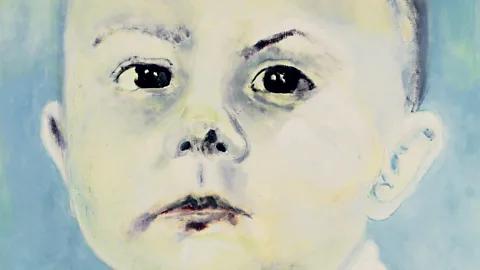 Marlene Dumas/Photo: Peter Cox, Eindhoven
Marlene Dumas/Photo: Peter Cox, EindhovenThe painter Marlene Dumas has transformed the way we see the world, writes Deborah Nicholls-Lee, as two new exhibitions of her work open.
A child smeared in paint lingers sheepishly in the foreground of a stark white canvas. The aftermath of an unsupervised art session is a recognisable image of family life, but in The Painter (1994) by Marlene Dumas, the girl's sinister stare and blood-coloured hands disrupt the trope, taking us somewhere darker.
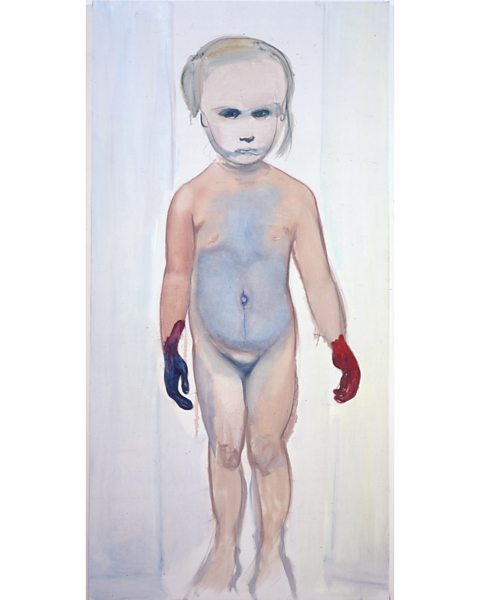 Marlene Dumas/Photo: Peter Cox, Eindhoven
Marlene Dumas/Photo: Peter Cox, EindhovenPerhaps the painter in the title is in fact Dumas, engaged in what she calls "the power struggle between the artist and subjects", and her daughter – the painting's focus – merely an accessory to broader questions of innocence and identity. "Art is not a mirror," Dumas has said, writing that "a good work of art is essentially elusive". In a ground-breaking departure from the conventions of portrait painting, feelings, rather than fixed representations, dominate.
A decade earlier, with self-portrait Evil is Banal, Dumas interrogated her own duplicity as a white girl brought up in South Africa under apartheid. In this portrait, a black-stained hand and face, within an otherwise peaceful pose, explores the symbolism of the light-dark dichotomy, and suggests a malign complicity contained in the outwardly ordinary. Later, the scarred face in The White Disease (1985) would provide an even bleaker evocation of the moral decay of the apartheid regime and its disfiguring of her homeland.
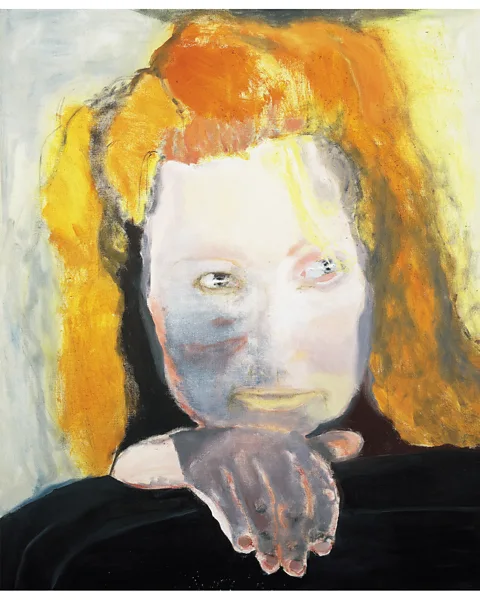 Marlene Dumas/Photo: Peter Cox, Eindhoven
Marlene Dumas/Photo: Peter Cox, EindhovenLeaving South Africa behind and moving to Amsterdam in 1976 afforded Dumas tremendous artistic freedom. She could wander the city in relative safety, see masterpieces close up, and there was easy access to pop culture and media − the basis, no doubt, for the collages that formed part of her early work.
Returning to portraiture, she shunned formal sittings, instead conjuring diverse, often transgressive, subjects – from sex workers to pop icons and playwrights − from the myriad newspaper cuttings, books and Polaroids that cluttered her Amsterdam studio − images that she says "are familiar to almost everyone, everywhere". This detachment from the original subject, described by Dumas as "the transformative magic of portraiture", created space for artistic interpretation, while drawing out the commonality of the human condition. "I deal with second-hand images and first-hand experiences," she writes.
 Marlene Dumas/Photo: courtesy Zeno X Gallery, Antwerp
Marlene Dumas/Photo: courtesy Zeno X Gallery, AntwerpTexturally, Dumas has always worked unhindered by expectation – producing dynamic, confident brushstrokes in unpredictable colours, and displaying a vigorous freedom of expression that differentiates her from most of her predecessors. Being painted by Dumas is no vanity project. Her works provoke compassion and aversion in equal measure, and prioritise a thickly meshed meta-text over an immediate likeness. Babies feature in morbid blue-green oils – alien arrivals with baffling dimensions, while the ephemeral beauty of a top model dissolves and warps as water bleeds into the ink.
Dumas's recent work includes a series of 15 paintings, exhibited at the Musée d'Orsay from 12 October 2021, to mark the bicentenary of the radical 19th-Century French poet Charles Baudelaire, who shared her fascination with the interplay of beauty and evil, eroticism and disgust. The works illustrate prose poems from Baudelaire's posthumous The Paris Spleen (1869), and demonstrate Dumas's extraordinary range, from her perceptive portrait of the brooding poet's genius, to the abstract melancholy of The Old Woman's Despair.
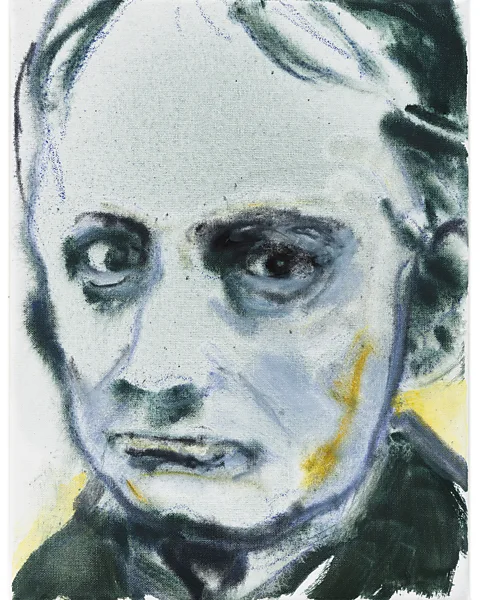 Marlene Dumas/Photo: Peter Cox, Eindhoven
Marlene Dumas/Photo: Peter Cox, EindhovenDonatien Grau, advisor for contemporary programmes at the Musée d'Orsay, worked with Dumas on the exhibition. "As opposed to other artists, there is no one way in which she paints," he tells BBC Culture. "She's consistently redefining, reinventing, trying things. What's really striking with the Paris Spleen, is it's really an encyclopaedia of her ways of painting, rooted in an engagement with Baudelaire."
With the exhibition, Dumas – now 68 – becomes the first living artist to present her work in the museum's celebrated Impressionists Gallery, where three of her pieces will be hung in dialogue with paintings from the museum's collection, including Vincent van Gogh's Starry Night.
This unprecedented honour is a mark of the esteem in which Dumas is held and the pivotal role she plays in art history. "It's really extremely rare to see paintings that have such extraordinary charisma," says Grau. "She is a master, in the classical sense: she makes masterpieces."
"There aren't many artists who can match historical paintings," Grau adds, pointing out "the density of time" abundant in Dumas's multi-layered work. "That is an extraordinary challenge to certain preconceived ideas, according to which, it wasn't permissible – or even possible – for women to tackle history," he says. "Every painting she makes is a contradiction to that preconceived idea."
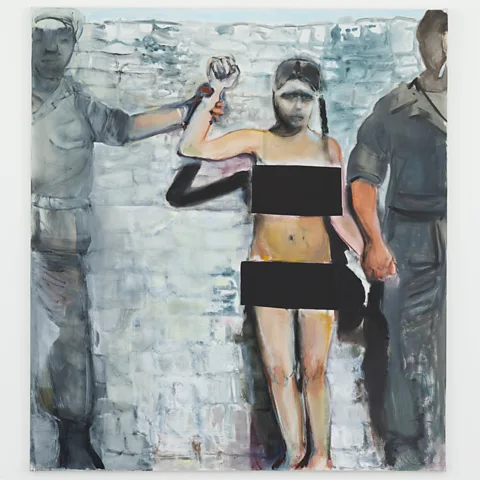 Marlene Dumas/Photo: Peter Cox, Eindhoven
Marlene Dumas/Photo: Peter Cox, EindhovenDumas's overtly political or historical pieces are partly governed by a desire to make visible the under-represented. As such, her broad oeuvre includes all that touches her. Paintings relating to Palestinian-Israeli relations and gay rights show how Dumas does not shy away from battlegrounds that are not strictly her own, while The Trophy and The Widow, painted in 2013, both set in her home continent of Africa, speak universal truths about female oppression.
"Marlene has such unbelievable empathy and sensitivity," says Grau. "And that is apparent when you meet her, and that is apparent when you look at her work." Like Baudelaire, whose essay on photography advocates for art based on imagination rather than empty reproductions, Dumas seeks our emotional engagement, taking us somewhere beyond prosaic materiality – a rat, a stripper, a celebrity – and showing us something new.
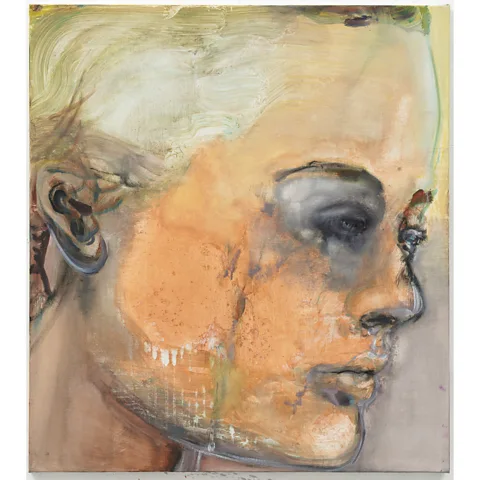 Marlene Dumas/Photo: Peter Cox, Eindhoven
Marlene Dumas/Photo: Peter Cox, EindhovenIn Sad Romy (2008), for example, the tragic life of actress Romy Schneider is evoked by the lachrymose grey paint, while Dumas's unexpectedly benign portrayal of terrorist leader Osama bin Laden (2010) suggests an uncomfortable shared humanity. Here, as with her 1985 masterpiece Die Baba − a ghoulish-green baby with a quizzical eyebrow, unflinching stare and disturbing resemblance to Hitler – the question again imposes itself: what does cruelty look like, and is it in all of us?
In the frame
Dumas is probably the first woman artist of the post-war generation to have made portraiture and figure painting the focus of her work, says Theodora Vischer, senior curator at the Beyeler Foundation in Basel, where the exhibition Close Up recently opened, showcasing nine pieces by Dumas, alongside key works by eight other pioneering women portrait artists, including Frida Kahlo and Cindy Sherman.
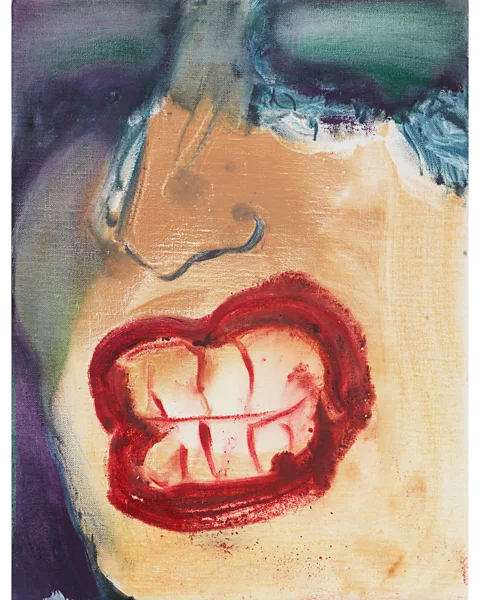 Marlene Dumas/Photo: Kerry McFate
Marlene Dumas/Photo: Kerry McFateOn show is Teeth (2018), an example of the intimate and confronting close-ups favoured by the artist, and typical of her fast and free − but highly controlled – style. "It's a pure, energetic painting composed of colour and gesture that merge somehow to form a face… that seems almost to hurl itself at the viewer," Vischer tells BBC Culture.
The painting is based on a photograph of opera singer Maria Callas, but this is less important than what the piece says about human existence. "Her portraits no longer seek to capture a person in his or her unique, independent individuality," explains Vischer. "They show people closely connected with the events and the world that's around them. A face, a portrait by Dumas, contains a variety of experiences, a plurality of knowledge and truth, but all have a real, lived origin, and at the same time are of a timeless nature."
"As an artistic personality, Marlene Dumas is certainly a role model for many artists," Vischer says. Speaking to The Independent in 2015, US-born British artist Chantal Joffe (born in 1969), for example, described her as "the greatest living painter". For Joffe and her contemporaries, Dumas had blown open the canon of portrait painting, paving the way for new forms of expression. "Even though I always painted figures, she gave me a freedom," Joffe says.
And if the value of work is also what buyers will pay for it, then Dumas has also helped trailblaze for women. In 2005, The Teacher became the most expensive work created by a living female artist when it sold for £1.8m at Christie's. Three years later Dumas broke her own record when The Visitor fetched £3.1m at Sotheby's.
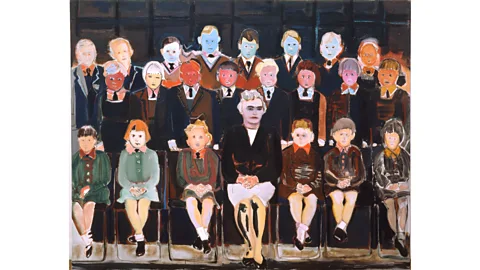 Marlene Dumas/Photo: Peter Cox, Eindhoven
Marlene Dumas/Photo: Peter Cox, EindhovenDumas, for her part, admires among others Edvard Munch, Francis Bacon, and the US portraitist Alice Neel (1900-1984), who also features in Close Up at the Beyeler Foundation. Neel's expressed desire "to catch life as it goes by, hot off the griddle", and to paint "people" – body and soul – rather than models, made a mark on her, and she acknowledges in hindsight The Painter's debt to Neels's Andy Warhol (1970).
As the Musée d'Orsay exhibition prepares to open, Grau cannot emphasise enough Dumas's influence on "every young painter". "She belongs to that great generation of artists who are women and who have completely shaped the way of art history," he says.
Sensuous but cerebral, cruel but tender – Dumas's work has overturned the aesthetic of portraiture, stripping back the veneer to reveal something loathsome and visceral but also sublime.
"There is no beauty if it doesn't show some of the terribleness of life," Dumas writes. "Art is there to remind us that all laws about what is beautiful and valuable were made by humans and can be changed by them."
Close Up is running at the Beyeler Foundation, Basel until 2 January 2022.
Marlene Dumas, The Paris Spleen and Marlene Dumas, Conversations are showing at the Musée d'Orsay, Paris until 30 January 2022.
And if you liked this story, sign up for the weekly bbc.com features newsletter, called The Essential List. A handpicked selection of stories from BBC Future, Culture, Worklife and Travel, delivered to your inbox every Friday.
